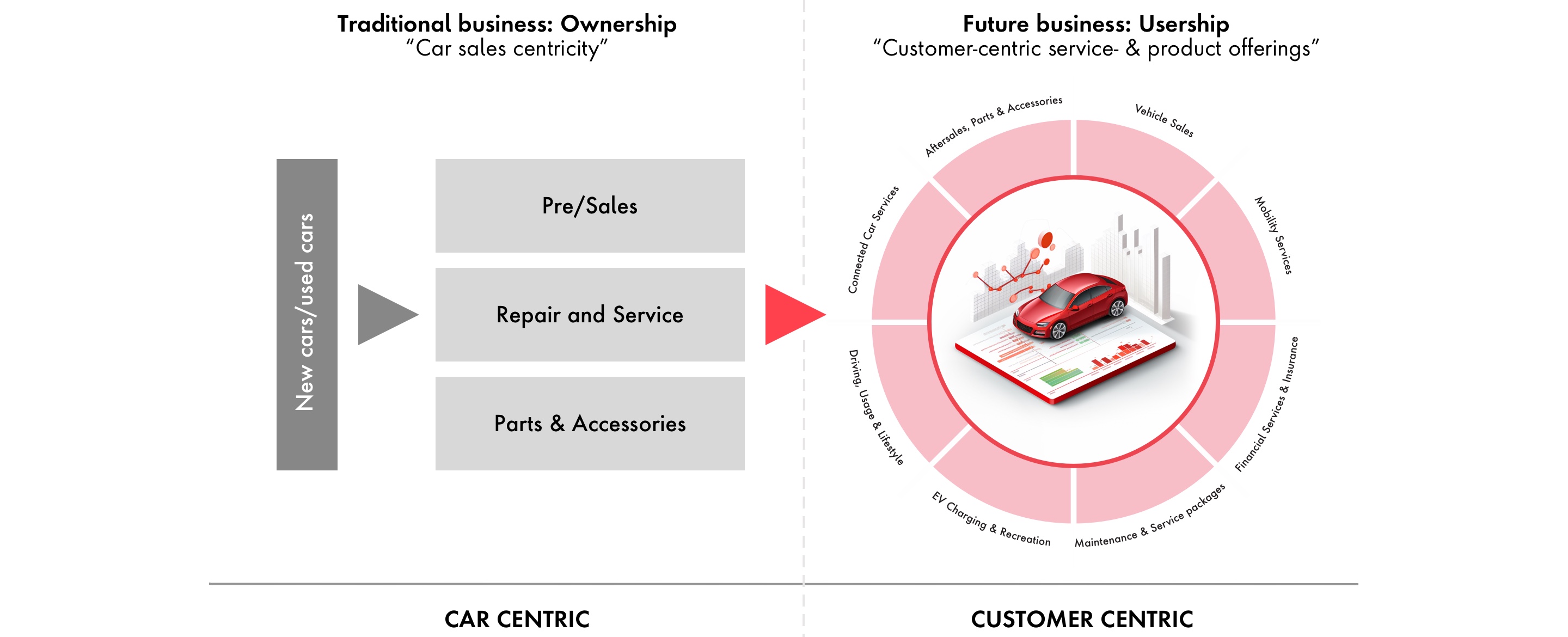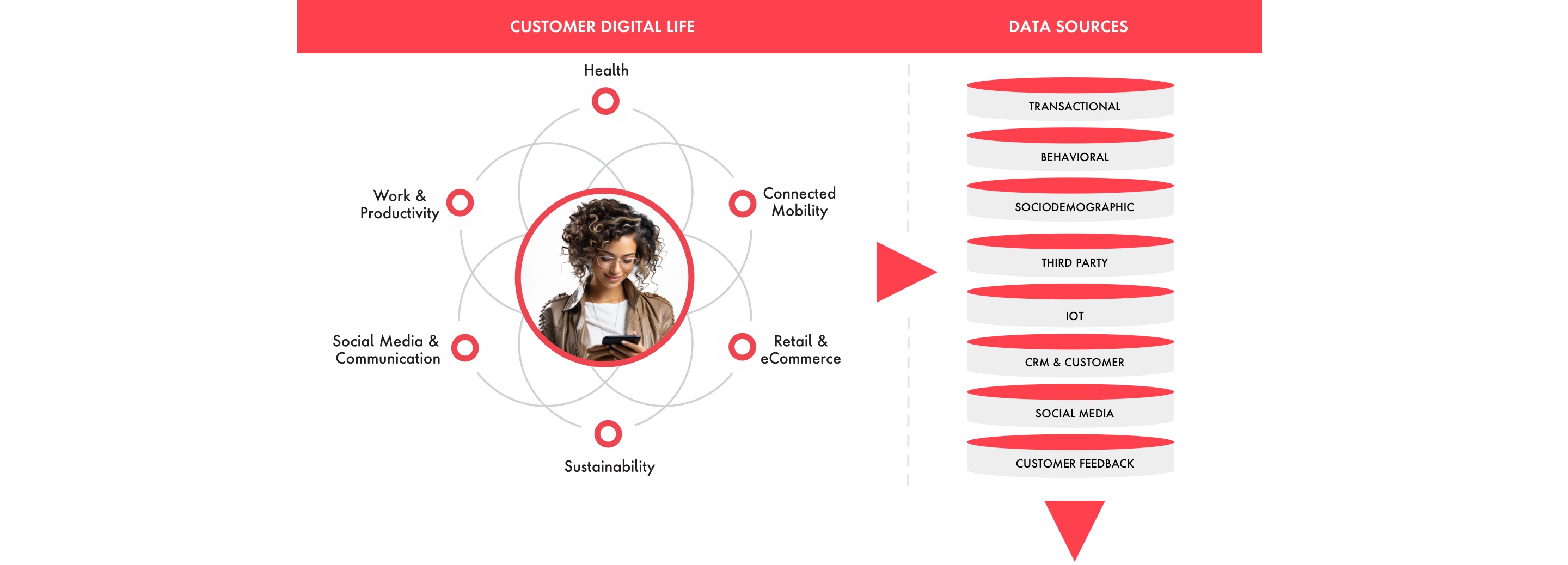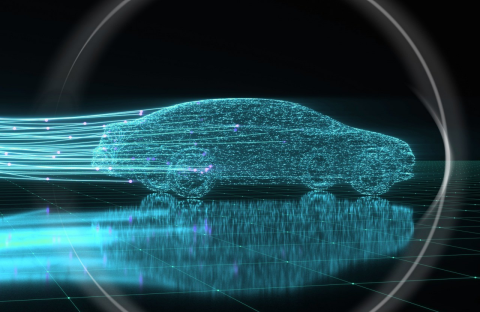What issue can we solve for you?
Type in your prompt above or try one of these suggestions
Suggested Prompt



Transportation & Mobility
Accelerating Generative AI Experiences for Automotive Customers with Digital Twins
OEMs have an opportunity to seize the moment and capitalize on the wealth of in-vehicle data and capabilities that are now available—but they must create exceptional customer experiences if they plan to remain competitive. Generative AI presents a new frontier of data and technology, ushering in a transformative shift that takes vehicles beyond the standard driving experience to more immersive, personalized environments that are uniquely tailored to customer habits, preferences and lifestyles.
OEMs have learned that offering basic features only get them so far. Customers want services and are willing to switch OEMs for those that can offer unique experiences. So, now is the time to explore new opportunities and investments that can impact customers in all new ways.
Some OEMs are using virtual assistants to allow drivers to control various vehicle functions such as navigation, climate control or entertainment. Others are expanding the use of AI and integrating generative AI tools into the voice control of vehicles to make them more intuitive.
Yet most OEMs are missing the opportunity to revolutionize the industry through AI to not only improve driving experiences but also improve customers’ lives beyond the vehicle.
Imagine if AI could proactively calculate the driver's optimal wake-up time based on weather and traffic patterns, make dinner reservations, arrange video conference calls with colleagues and manage the vehicle's carbon footprint in real time. These are just a few examples of how generative AI can be used in vehicles in the future to transform daily life.
Data is the key to customer-centricity as it allows OEMs to achieve unprecedented personalization at scale, making the customer’s digital life seamless—integrating life, work and travel.

The new testing ground for AI-driven customer experiences
The increasing availability of data makes it easier for OEMs to segment customers, create targeted marketing campaigns and personalize experiences. Many also used AI to create digital twins—a virtual replica of an object or system that is updated with real-time data and machine learning to predict and test products. Traditionally, automotive companies have used these twins to intelligently plan production, test new features and prototypes and predict demand.
With the vast amount of data now collected in the vehicle ecosystem, OEMs are able to reinvent the digital twin to embrace and benefit customers as well. By creating a digital customer twin—a virtual replica of the customer including their interests and behaviors—stakeholders can test personalized, immersive experiences and better predict customer behaviors.
Using transactional, behavioral, sociodemographic and other data, an OEM can gain a never-before-seen view of a customer in real time. Some of the data, such as typical driving routes, will come from the vehicle itself and other data, like how much time a customer spends on social media, will come from third-party sources. Combined, the data reveals insights that OEMs can act on to test personalized, immersive experiences, better predict customer behaviorsand make calculated decisions about services to offer via the vehicle.

Making this move to capture and act on a variety of data will require the OEM to become an ecosystem orchestratorthat collaborates with ecosystem players to gain access to customer data and offer services built around a singular platform. Partnering with others in the ecosystem to share data will enable OEMs to create digital customer twin models that increase efficiency, reduce costs, increase product/service quality and help predict future customer needs.
Use cases that revolutionize driving
As OEMs have learned in the past, capitalizing on digital twins creates extremely efficient and intelligent testing grounds for vehicles, and this expansion into digital customer twins will allow for new testing of experiences and features. Combined with machine learning and AI, digital customer twins create an increasing number of customer-facing AI use cases across marketing and sales, in-vehicle experiences and daily life.
For example, through the knowledge of a digital customer twin, an AI-enabled virtual sustainable travel assistant would equip drivers to make informed decisions while traveling. By analyzing relevant sustainability criteria, the AI assistant would recommend the most sustainable transportation modes and accommodations.
It could recommend sustainable driving patterns and routes, efficient charging times and even recommend eco-friendly stops along the route.
The use cases are limitless—from social listening to virtual health assistance to work companions, and the technology has proven to help OEMs in production and manufacturing. With this next level of digital customer twins, OEMs have an exciting opportunity to benefit drivers as well.
Building a digital customer twin
Use cases are exciting to explore, but OEMs can face challenges along the journey:
- Control of data: When data is scattered across different knowledge sources, it leads to slower data processing and adoption.
- Lack of user centricity: Users expect AI to deliver human-like interactions. However, AI systems vary in how “human” they are and can even produce coherent yet inaccurate outcomes.
- Security concerns: There are many potential security issues that must be addressed. These include preventing data leakages and bias, preventing the incorporation of sensitive data in AI models, and properly managing user access to AI.
When building AI solutions such as digital customer twins, OEMs must address these fundamental challenges.
Seven steps to building a digital twin
Here are seven steps to building a digital twin:
Measure the effect of personalization on customer experience. Are customers more satisfied? Do they engage more with personalized services or products? If not, adjustments to the digital twin or consideration of other ways to improve customer experience might be necessary.
When working with the world’s largest OEMs, it is important to consider a platform approach that includes AI capabilities to efficiently manage and maximize the power of customer digital twins.
Revolutionize your business with an AI-driven strategy
Generative AI is here, and it presents a new opportunity to not just elevate customer experiences, but also change customers’ lives.
Publicis Sapient has a clear and operationalizable approach to begin your journey with digital customer twins. Our SPEED capabilities: Strategy and Consulting, Product, Experience, Engineering and Data, combined with our culture of impactful personalization, can help your business tackle this new frontier.
Work With Us
Are you ready to begin your journey to a new era of value and profitability?
Let’s get started.
Related Reading
-
![]()
Insight
Publicis Sapient Customer Data Survey 2023
Publicis Sapient surveyed more than 6,700 consumers globally and learned that people are willing to share their data in exchange for certain advantages.
-
![]()
Insight
How High-Performance Computing Elevates OEM Data Strategy
Find out how new customer-centric data processing models are shaping automotive technology, design and security.
-
![]()
Insight
Why Connected Services Are the Route to Profitable OEMs
Discover why OEMs are increasingly using apps to connect with customers, improve experience and drive revenue growth.








